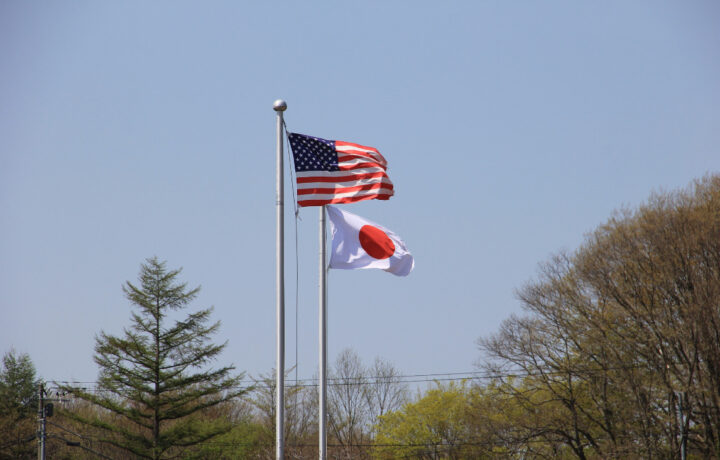Earlier this year, the U.S. State Department approved the sale of 160 Standard Missile-6 (SM-6) Block Is to Japan in a deal worth $900 million. Developed by RTX subsidiary Raytheon, the SM-6 is a shipborne missile was developed to defeat a range of targets from supersonic anti-ship cruise missiles to threat surface ships.
According to the Defense Security Cooperation Agency (DSCA), the sale would “improve Japan’s capability to meet current and future threats by allowing the Japan Maritime Self Defense Force (JMSDF) to deploy the latest Standard Missile capabilities from their current and future AEGIS Weapon System (AWS) equipped surface combatants,” and added, “The proposed sale will further enhance Japan’s capability to protect Japan and local allied land forces and will significantly improve Japan’s contribution to integrated air missile defense in the Indo-Pacific region.”
The SM-6 Block I has been seen as being capable of countering North Korean and even Chinese ballistic missiles during the final phase of flight. It can also be employed to counter manned and unmanned aircraft, and has demonstrated the ability to hit a surface target.
The air-defense missile is currently employed in the arsenals of the U.S. Army and U.S. Navy. The SM-6 is reported to be deployed on at least 60 U.S. Navy surface combatants, and Raytheon has delivered more than 500 to date.
Three variants – Blocks I, IA, and IB – are produced at Raytheon’s facility in Redstone, Alabama. That facility was expanded by 26,000 square feet, or more than 50% of its initial space.
Could Tokyo Co-Produce U.S. Missiles?
During U.S. Secretary of Defense Pete Hegseth’s visit to Japan, the country’s Minister of Defense Gen Nakatani, the issue of co-production of the SM-6 as well as another missile was brought up.
“It is a wider task for us, for both defense industries to support each other, to complement each other through co-development, co-production, co-sustainment and other initiatives, especially the stable delivery of missiles, is crucial for both sides,” Nakatani said during a joint press conference that followed the first U.S.-Japan defense ministers’ meeting to take place since President Donald Trump took office again in January.
“Under the framework of defense industrial cooperation, acquisition and sustainment forum, DICAS for short, we affirm to expedite efforts to start co-production of advanced mid-range air-to-air missile or AMRAAM, as early as we can in action,” Takatani added. “And I conveyed my intention to pursue the possibility of co-production of surface-to-air missile SM-6 as well.”
The AIM-120 advanced medium-range air-to-air missile (AMRAAM) is a beyond-visual-range air-to-air missile capable of all-weather day-and-night operations. A follow-on to the AIM-7 Sparrow missile series, the AMRAAM is compatible with the U.S. Air Force’s F-15 Eagle/F-15EX Eagle II, F-16 Fighting Falcon, F-22 Raptor and developmental F-35 Lightning II fighters, as well as with U.S. Navy F/A-18 C-F Hornet/Super Hornets.
The Biden administration had been considering joint production of the AMRAAM and the Patriot Advanced Capability-3 Missile Segment Enhancement (PAC-3 MSE).
In January, Japan’s Acquisition, Technology & Logistics Agency (ATLA) began a feasibility study that will consider various aspects of domestic production of the AMRAAM, including the necessary costs, preparation time, and the scope of potential production activities, as well as any challenges that could arise when initiating manufacturing in Japan.
The Japanese Ministry of Defense has suggested that the future joint production could be “a mutually beneficial project for both Japan and the United States,” and noted that the SM-6 is “an essential missile for the self-defense of AEGIS System Equipped Vessels (ASEVs).” The ministry further highlighted that the production capabilities in Japan could complement those of the United States, bringing benefits not only to the island nation but for the defense production and technological base of both countries.
“We would like to continue to discuss the joint production of missiles that are mutually beneficial for both Japan and the United States, including the SM-6, as well as AMRAAM, and PAC3 that we have discussed so far, even at an administrative level,” the U.S. is reported to have responded to the request. “We understand the importance, so we would like to deepen the discussion at the administrative level in the future.”
Other Joint Production in Japan
Though Tokyo has expressed “disappointment” with the tariffs imposed by the Trump administration, Japan remains a key U.S. ally in the Indo-Pacific, and is “sheltered” under the U.S. nuclear umbrella, while it is home to major U.S. military bases.
Japan is also a major partner in Lockheed Martin’s F-35 Joint Strike Fighter program, and the island nation is home to the second fully operational international final assembly and check-out (FACO) facility for the fifth-generation fighter.
The U.S. Navy has also been exploring options to have its warships maintained at Japanese shipyards.




